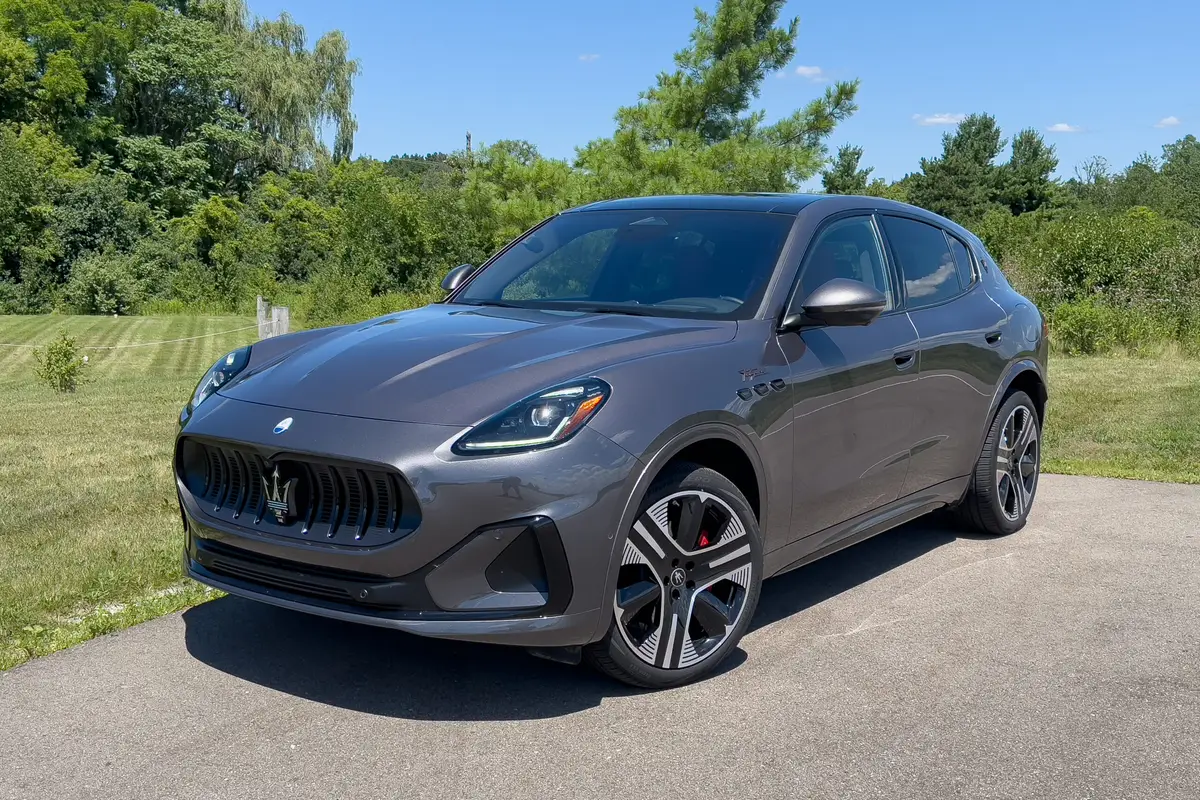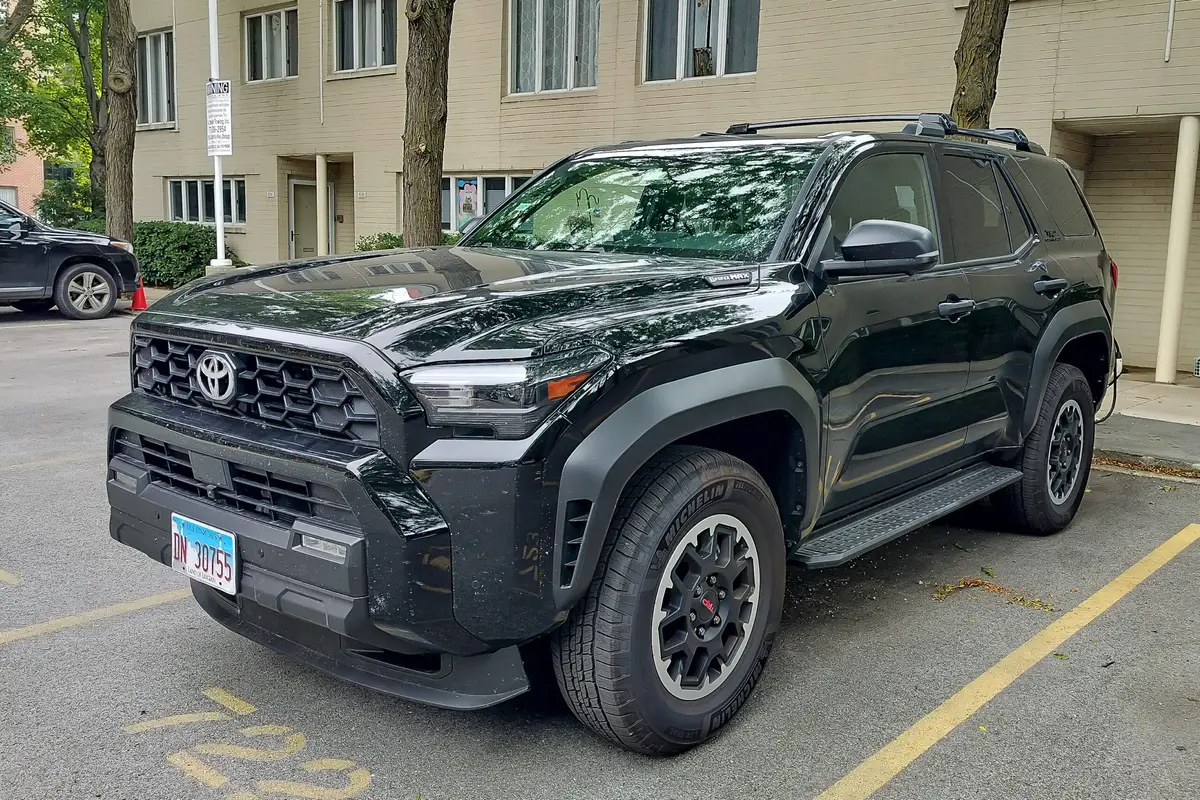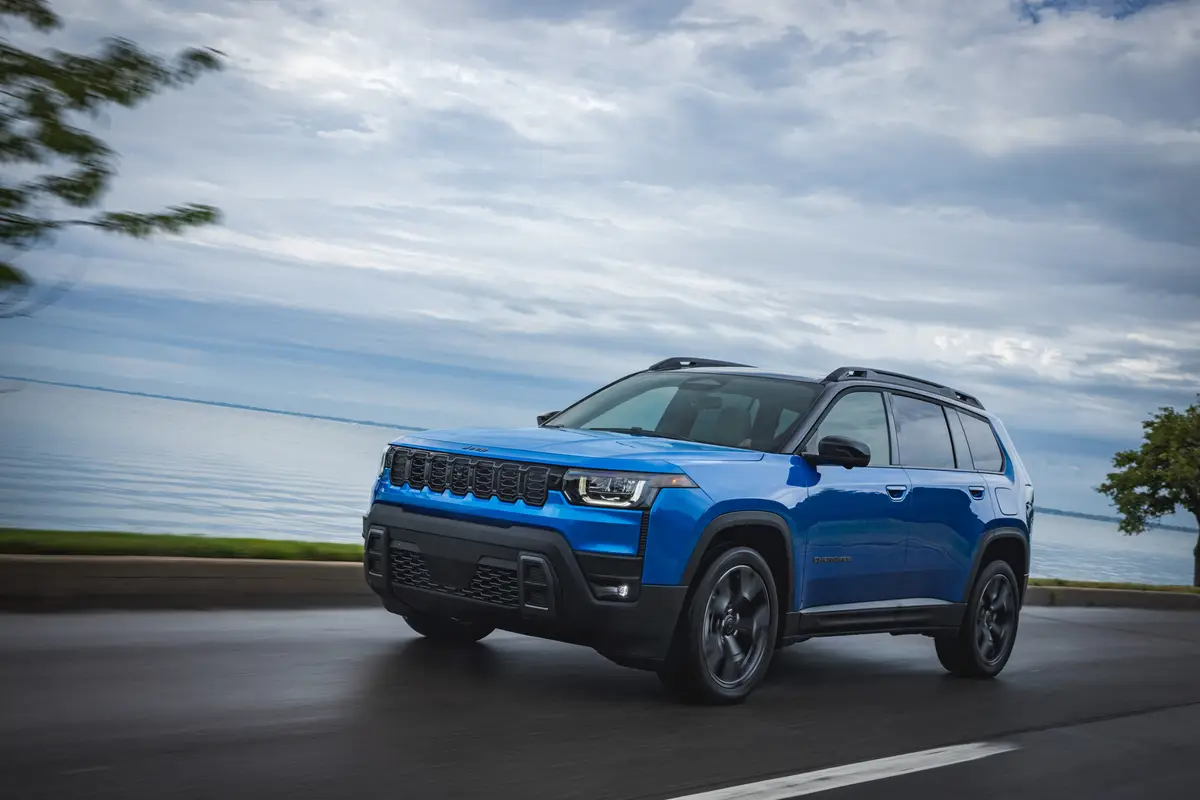2017 Toyota Prius Prime Review: First Drive

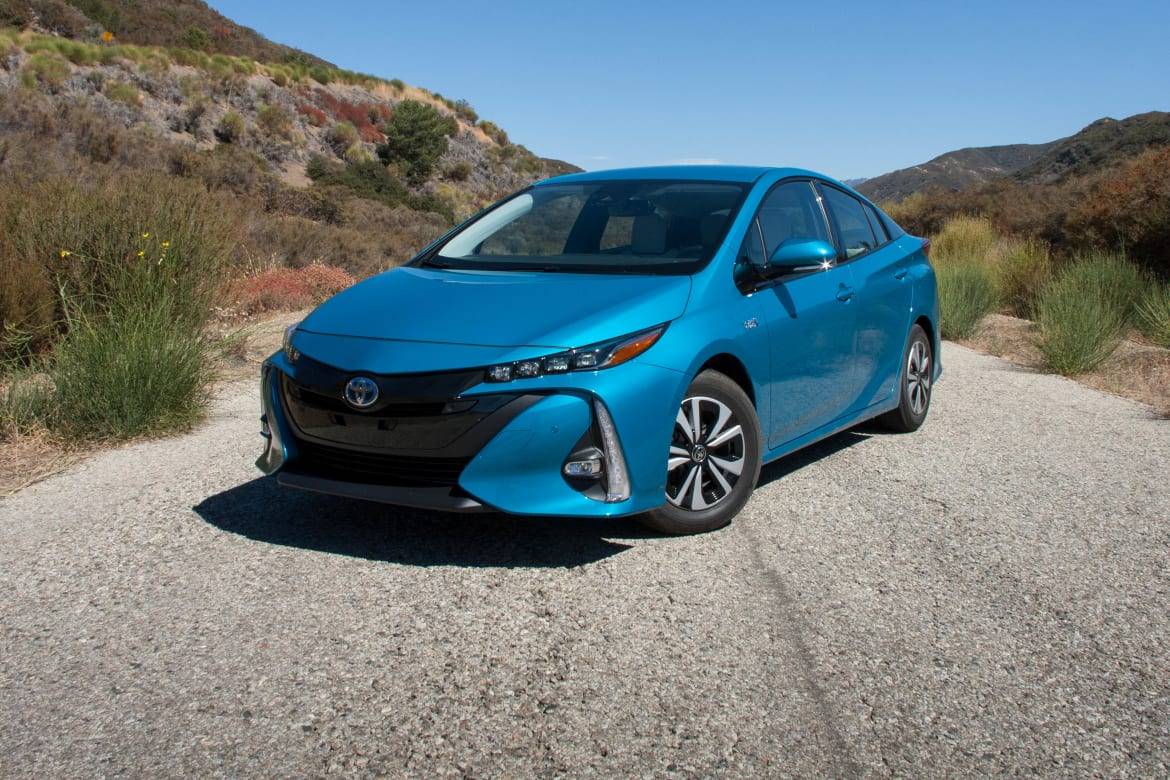
CARS.COM — A friend of mine sent me a photo the other day of a bumper sticker on the back of a Toyota Prius. It read “cool Prius!” with the attribution “-nobody,” and that coaxed a good-sized laugh out of me. For reasons I can’t fully explain, the Prius has come to be the antithesis of cool. On the face of it, you would think that there would be some positive street cred associated with the first successful, mainstream gas-electric hybrid. But instead it’s mostly the butt of jokes.
Related: 2017 Toyota Prius Prime Plug-In Hybrid Charges into 2016 New York Auto Show
Toyota looks to change the perception of the Prius with the introduction of the 2017 Prius Prime. In addition to the plug-in nature, the new model offers unique styling, a larger battery and lots of new technology, including a giant touchscreen for the multimedia system. I drove the Prius Prime around Southern California to see if the car can match the ambition of its name and do the improbable — make the Prius seem cool.
There will be three available Prius Prime trim levels when it goes on sale in November: Plus ($27,965, all prices including destination), Premium ($29,665) and Advanced ($33,965). If you want the larger screen, you’ll have to spring for a Premium or an Advanced, the trim I tested. The Advanced also adds remote climate control, a head-up display and intelligent parking assist.
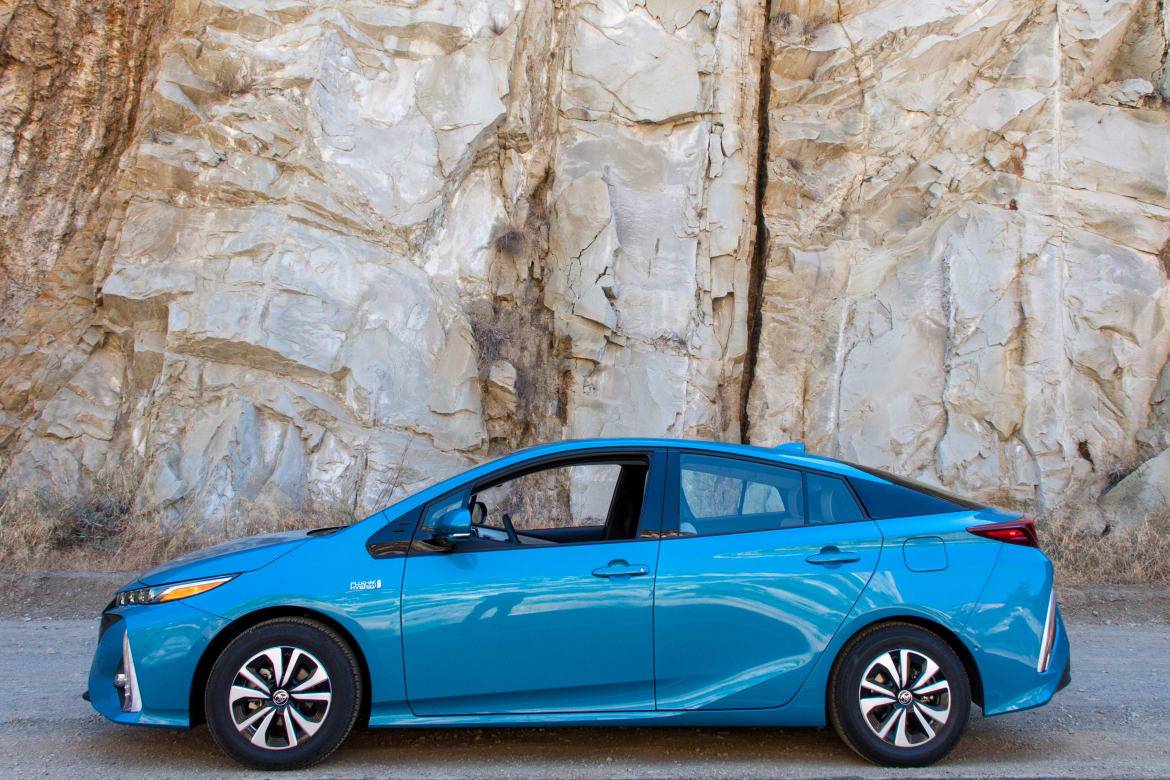
By the Numbers
The Prius Prime gets an EPA-estimated 25 miles of electric range, 640 miles of driving range including gas-powered driving, and fuel economy ratings of 55/53/54 mpg city/highway/combined once the original charge is depleted and the Prime is running in hybrid mode. Those fuel economy ratings are slightly better than those of the regular 2017 Prius which gets an estimated 54/50/52 mpg.
Toyota did make a plug-in version of the past-generation Prius, but if you didn’t know that, it’s understandable. It was last sold as a 2015 model and was too similar to the regular Prius to offer much extra value. It provided only an estimated 11 miles of electric range and could go only up to 62 mph on electric power alone, which didn’t make it very practical. You couldn’t go on the highway without the engine kicking in.
But for the Prius Prime, Toyota doubled the battery capacity compared to the old Plug-In, from 4.4 kilowatt-hours to 8.8 kWh, and it offers an estimated 25 miles of electric-only range at speeds up to 84 mph. Toyota says that electric range is enough to cover the commute of more than half of Americans.
Charging on a household outlet (120 volts) will take less than 5.5 hours, but it can be filled in just over two hours using a 240-volt Level 2 hardware outlet at home or most public charging stations. If you’re charging at home with Advanced trim levels, the period during which the car charges can be programmed in the car or via a smartphone app to take advantage of off-peak electric rates.
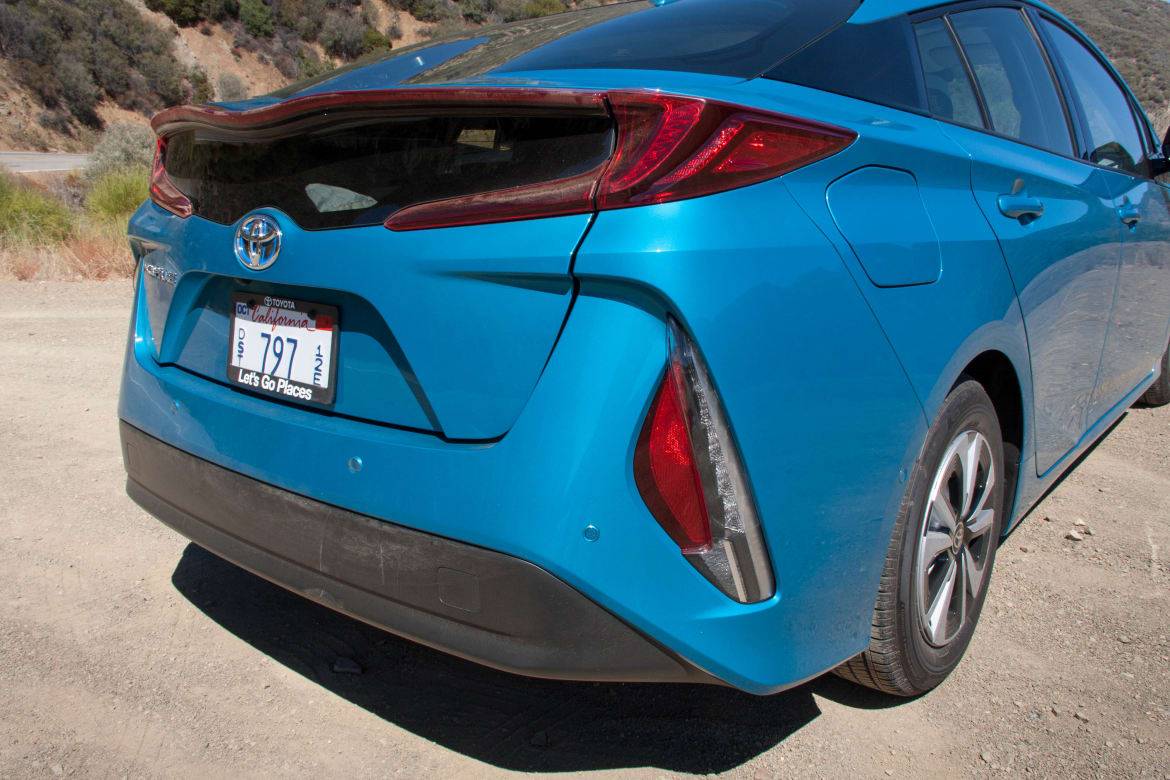
Exterior Styling
The Prius Prime is 4.2 inches longer than the regular Prius, with longer overhangs front and rear (the two share almost the same wheelbase). Although they both look similar, there are enough differences that I prefer the Prius Prime’s styling over the standard model. The front takes the headlights from the hydrogen-powered Mirai (which I like) and the rear styling is different, too, with a “dual-wave” rear glass design that splits the rear window into two pieces.
It also gives the Prime a more attractive rear instead of the weird kinked taillights of the regular Prius, which only highlight its awkward angles. The LED taillights on the Prime instead sit horizontally and run the width of the tailgate, a look I much prefer.
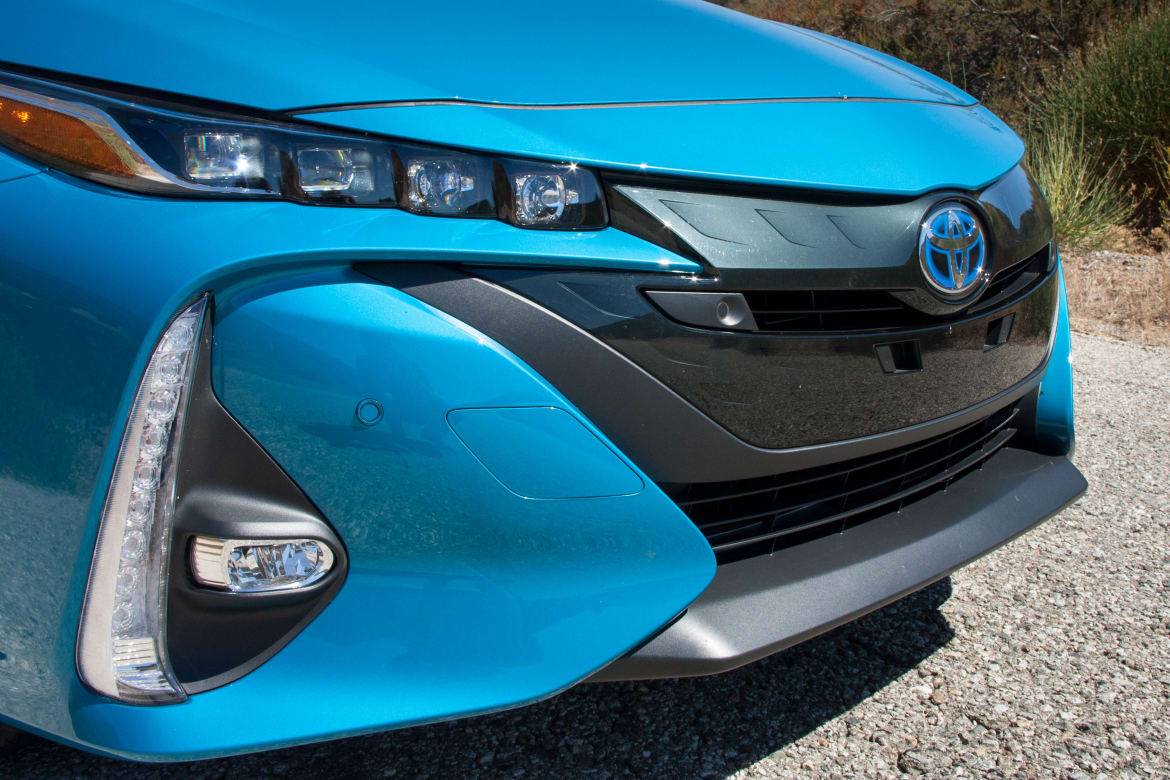
EV Power You Can Actually Use
The previous generation Prius Plug-In could theoretically do 62 mph on electric power alone, and I use the word “theoretically” because doing it in practice without activating the gas engine required stepping on the accelerator as if it were built of fine china.
To rectify this, Toyota added a new one-way clutch so that the generator and electric motor can both drive the wheels, which helps to raise the electric top speed to 84 mph. I tested this while getting onto the highway, accelerating aggressively up an on-ramp. The Prius Prime ran all the way to nearly 80 mph with ease and without a peep from the gas engine, a vast improvement over the old Prius Plug-In.
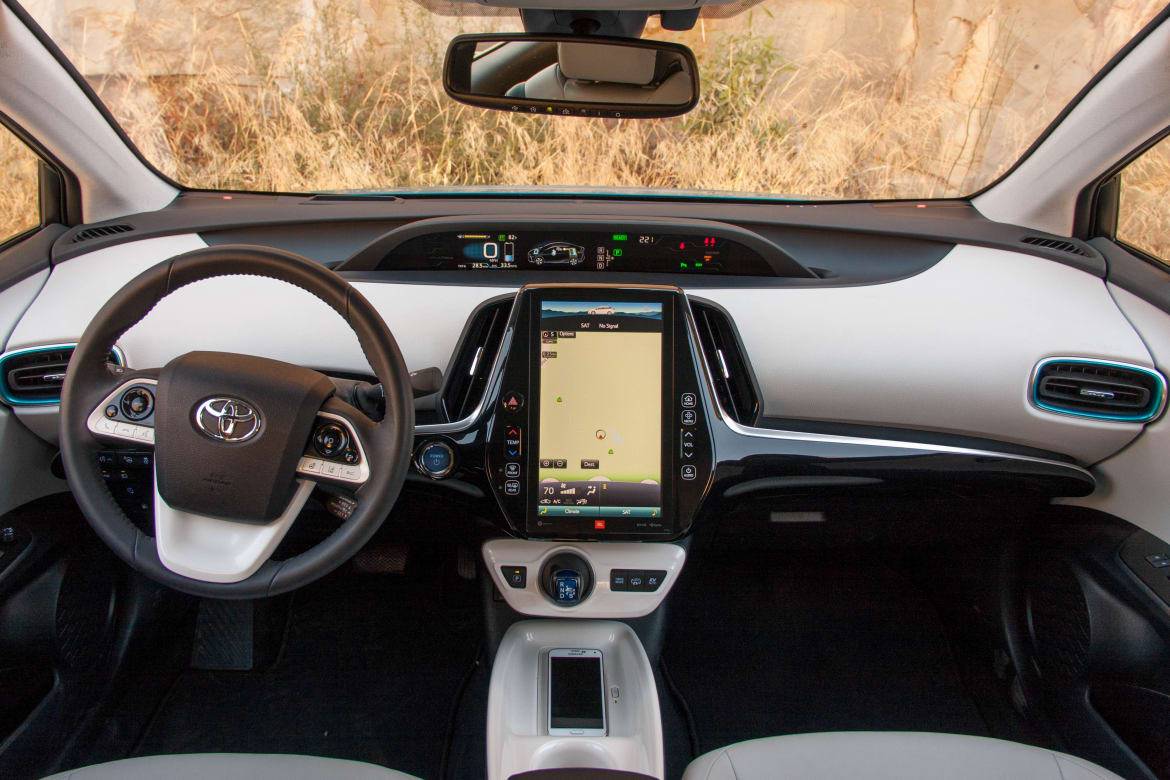
How It Drives
Under the hood is the same powertrain found in a standard Prius, a 1.8-liter four-cylinder engine that combines with two electric motor-generators to produce a combined 121 horsepower. But that bigger battery means it has better jump off the line, and it felt to me like the Prius Prime actually has a better takeoff when running solely on electric rather than hybrid power.
The handling and ride improvements from the Prius’ 2016 redesign carry over to the Prime. It’s still not a great car to drive, but the added structural rigidity and tighter steering feel have improved it. There is better feedback from the wheel and seat, which was direly absent from the previous generation.
There is one quirk to the driving experience, however: The Prius Prime is a heavier car overall, weighing around 300 pounds more than the standard Prius if we compare the top trim levels of each. Much of that added weight comes from the larger battery, which engineers said weighs around 250 pounds, or around 150 pounds heavier than the battery in a standard Prius.
That extra heft does give the back end some added sway; it almost feels like you’re driving a pickup truck with a large load in the bed. It doesn’t seem to hold back acceleration, but during quick turns, the rear seems a bit hesitant to follow the front wheels. But even with this caveat, I prefer the driving experience in the Prius Prime to any other Prius I’ve driven.
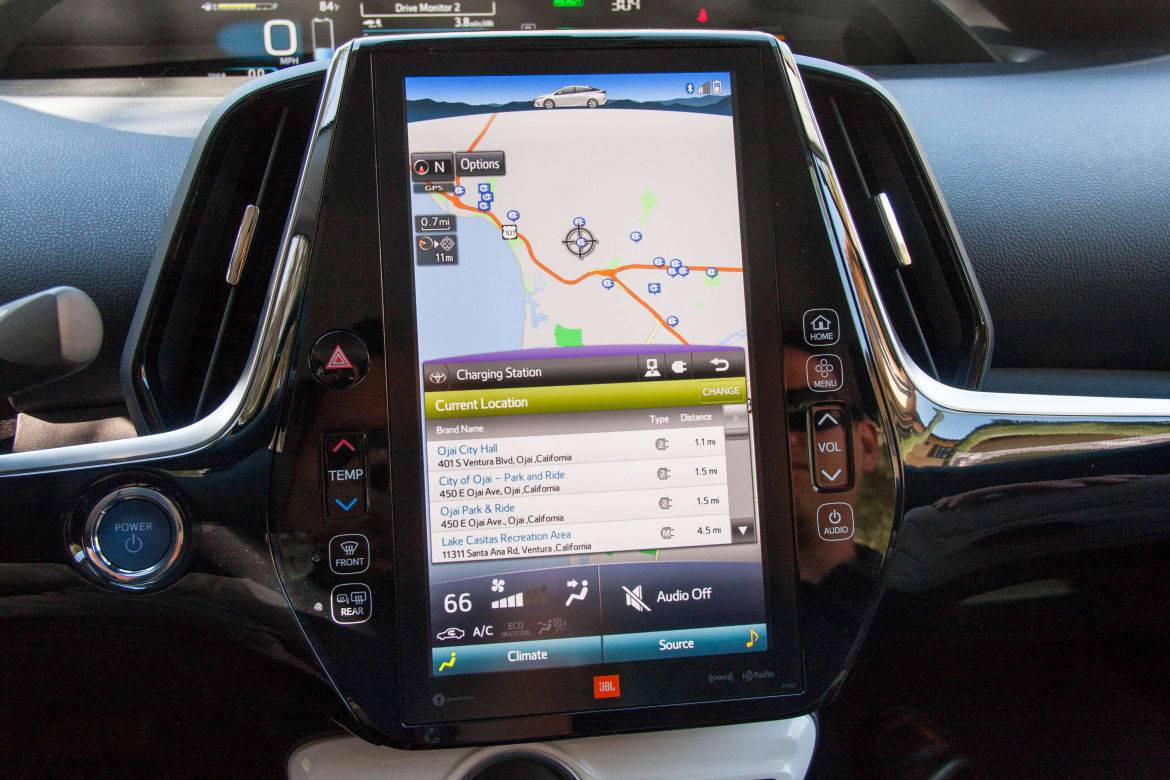
Big Screen
The centerpiece of the Prius Prime is a new multimedia touchscreen that measures 11.6 inches. It feels much larger than the 9-inch screen in the Volvo XC90 that had been the largest from a volume brand, but it still has a way to go to catch the 17-inch screen found in the Tesla Model S and Model X.
The biggest factor for a screen that size is its responsiveness. If it feels slow to respond to touch, that problem is exacerbated by how large the screen is. Thankfully — at least in a new Prime — the screen is quick to react to inputs throughout the different menus, and it even handles pinch zooming on maps smoothly. (We’ve found touchscreen systems in cars can slow down over time, just like smartphones and tablets can.) Brightness in sunlight was good and I could see the screen clearly even through polarized sunglasses. Ergonomically, its placement is also correct — I didn’t find myself leaning forward to reach the far side of the controls.
With a screen this large, different portions of it can be used to provide easy access to different controls. There are no more physical controls for the climate or audio systems; they pop up on the screen after touching a dedicated menu area for either on the bottom. Toyota has placed the rest of the menus in four balls (Info, Destination, App Suite and Phone) that come up via the Menu button — a fixed touch-sensitive button to the right of the screen along with Home, volume and audio power buttons. Opening most of the pages from the menu uses only the bottom of the screen — the top will continue to display the map and/or navigation directions, which more effectively uses the entire size of the screen.
Toyota also announced that Android Auto and Apple CarPlay will not be coming to the Prius Prime, so Toyota’s Entune infotainment system will be the only interface option.
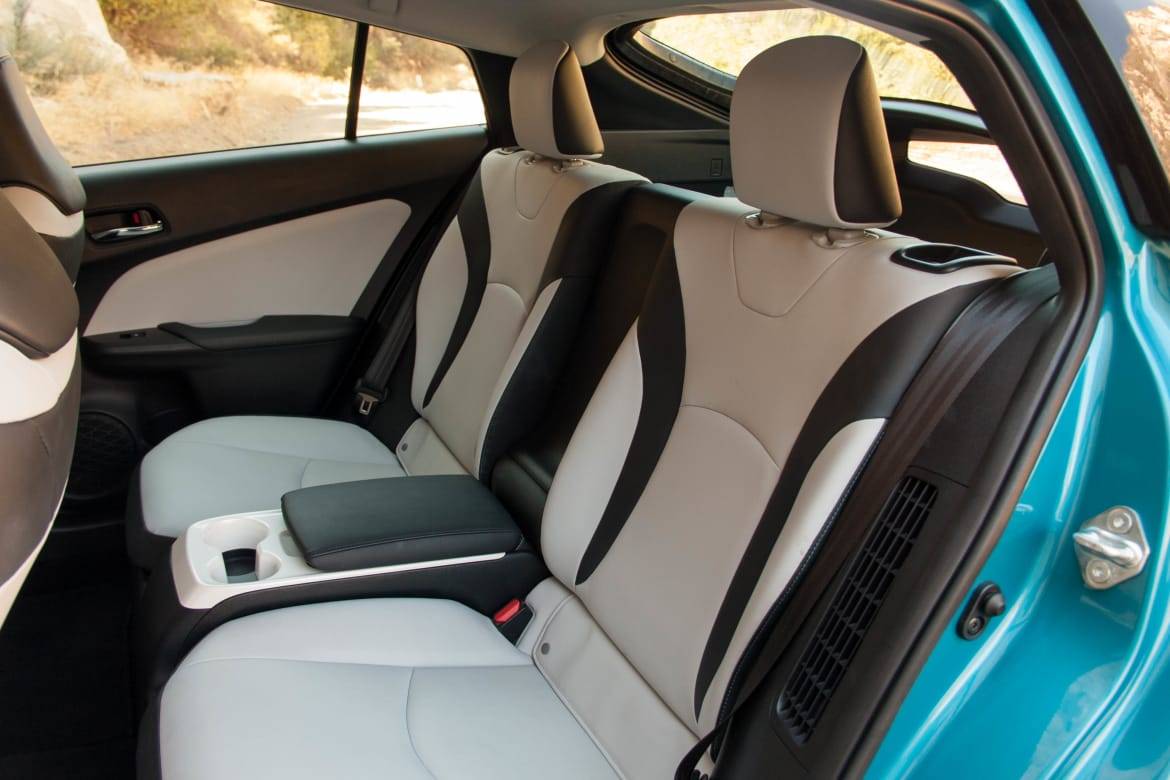
Interior
The Prius Prime will come only with seating for four occupants, with the center of the backseat reserved for a large armrest. The hatch provides 19.8 cubic feet of cargo space, which can be expanded by folding down the 60/40-split folding rear seat. The cargo number is lower than the 24.6 cubic feet found in the standard Prius due to the larger battery, which raises the cargo floor above the bottom of the opening. The seating surfaces are comfortable, and the test car I drove had a two-tone black-and-white interior that kept things visually interesting inside.
I did notice a lack of charging ports in the Prime, which has only one USB port offered up front. 12-volt outlets can be found front and rear, but having just one USB point is a strange decision on a vehicle that is so stuffed with technology.
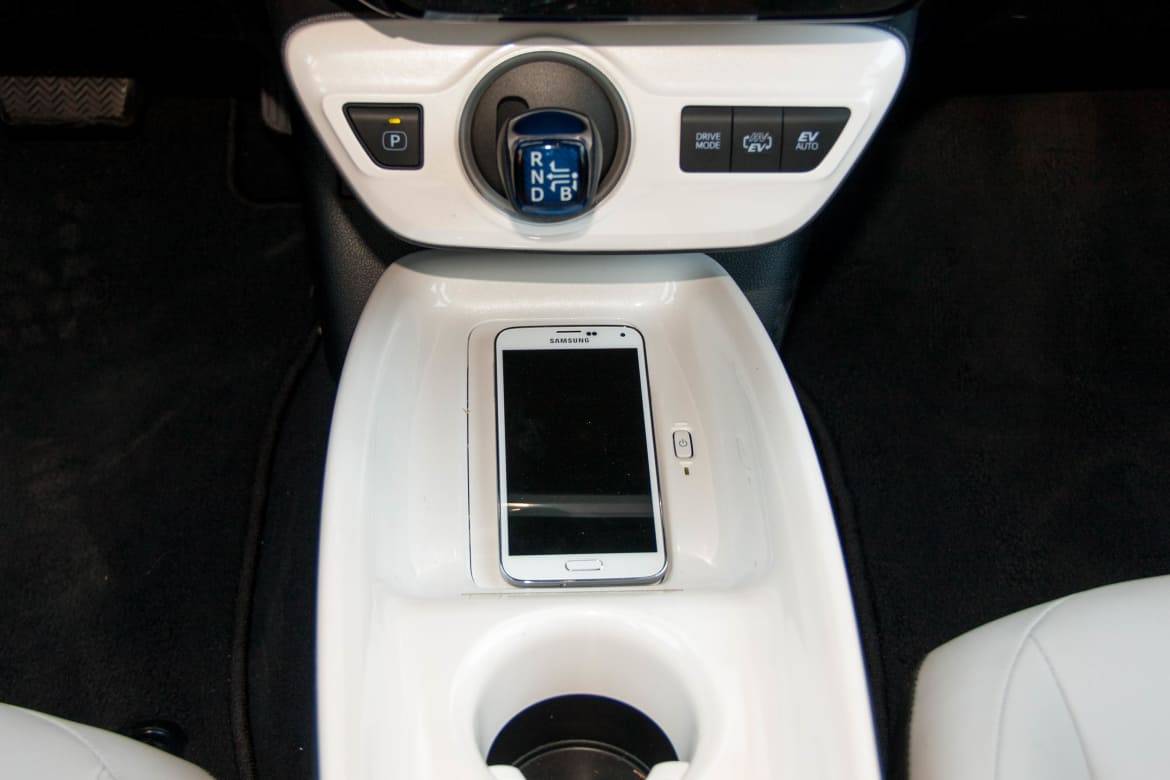
Safety
Toyota Safety Sense P is standard on the Prius Prime and includes forward collision warning with pedestrian detection and automatic emergency braking, lane departure warning with steering assist, automatic high beams and an adaptive cruise control system that will work all the way down to a stop. Once you stop, you’ll have to tap the pedal or hit the resume button to get moving again. An optional intelligent parking system will steer the Prius Prime into a parallel parking space or back it into a perpendicular one.
Conclusion
The Prius Prime exceeded my expectations, offering superior performance and increased electric range compared with its predecessor, along with better fuel economy ratings and the giant multimedia touchscreen inside that is ambitious and well-executed.
It’s hard to say whether or not the Prius Prime is cool. Heck, I’m not even sure if I have the authority to declare it so. But I will say this: Compared with the old Prius Plug-In, the Prime absolutely runs circles around it in every way.

Former L.A. Bureau Chief Brian Wong is a California native with a soft spot for convertibles and free parking.
Featured stories
